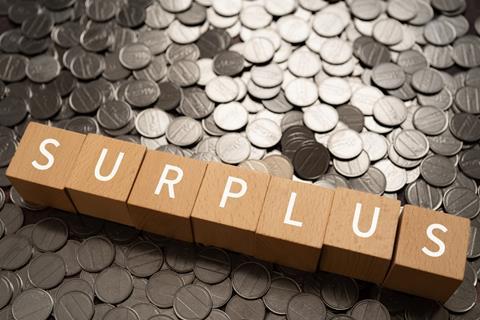Trustees of defined benefit (DB) pension schemes will be granted powers to introduce surplus release rules to their schemes, under plans set out by the government this week.
Yesterday (29 May), the government published its response to the ‘Options for Defined Benefit schemes’ consultation, outlining how it intends to allow DB pension schemes to make use of surplus capital.
Through the Pension Schemes Bill, the government will introduce a “statutory resolution power” for trustees to permit modifications to scheme rules.
“Use of this power will be at the discretion of the trustees, who remain best placed to make decisions in the context of their individual scheme circumstances and their duties to scheme beneficiaries,” the consultation response stated.
It will also amend a section of the 1995 Pensions Act to clarify that trustees still have an overarching duty to act in the best interest of members.
The government has proposed that pension schemes that are in surplus on a low dependency basis, as defined by the Pensions Regulator’s (TPR) DB Funding Code, will be permitted to access surplus. Any surplus released will still be subject to a 25% tax.
“Low dependency is a robust and prudent measure of funding strength,” the government said. “If a scheme is fully funded on this basis, it is expected that there will be enough resources to pay the member benefits in full without any further support being required from the sponsoring employer.”
This will be subject to a consultation on draft regulations.

PPF underpin idea rejected
The government has also rejected requests from some corners of the pensions industry to introduce a “100% underpin” from the Pension Protection Fund (PPF), to give trustees added security when releasing surplus. It cited “high cost and moral hazard concerns”.
However, the model in the consultation involved an “opt-in” model that would have allowed pension schemes to access full PPF protection by paying a higher levy.
Jos Vermeulen, head of solution design at Insight Investment, argued that the government should consider a “universal” underpin instead.
“A straightforward way to reassure trustees and members would be to increase the protection provided by the PPF to 100% of scheme benefits for all pension schemes,” he said.
“An alternative approach of a universal 100% underpin would likely increase the amount of surplus released and the associated benefits. The costs and risks of doing so would be minimal, and insignificant when set against the potential positive impact of such action.”
Low dependency versus buyout
The government’s proposal to use a low dependency basis rather than buyout-level funding to define surpluses has met with a mixed response from the pensions industry.
James Dean, pensions partner at law firm Freeths, said the move could increase the scope of the reforms, as the low dependency funding threshold is lower and so more surpluses would be deemed to arise.
“Opining on the level at which scheme funds can be paid out, and back to the employer, will be an entirely new direction for TPR.”
Richard Wellard, Hymans Robertson
Richard Wellard, head of alternative risk transfer solutions at Hymans Robertson, said the use of low dependency had “some material knock-on implications”, particularly for the regulator.
“TPR) currently oversees the low dependency basis set by trustees for defining when contributions need to be paid into the scheme,” he said. “Opining on the level at which scheme funds can be paid out, and back to the employer, will be an entirely new direction for TPR. Time will tell how comfortable and straightforward this will be.”
However, insurers have expressed doubts over the decision.
Hetty Ahern, head of long-term saving policy at the Association of British Insurers, said: “DB scheme members will want confidence that this will only happen once the core purpose of the scheme – to pay members their pensions – is met.
“It’s right that the government has committed to protecting member interests, but we maintain that the safest funding threshold for members, before surplus is extracted, is buyout levels. We look forward to continuing to work with government and the regulator as they develop the detail of these proposals.”






















